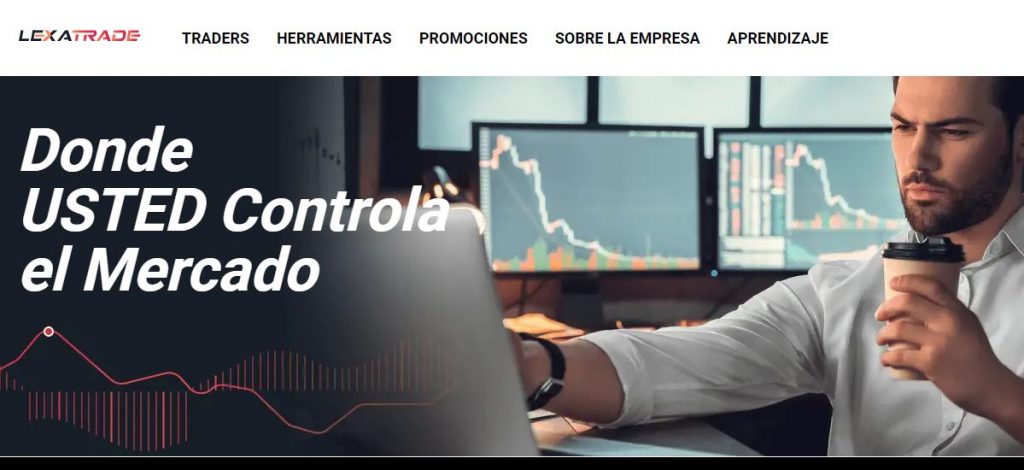Algorithmic Trading and Quantitative Strategies on Apple Books
Contents
A statistical arbitrage strategy will find a group of stocks with similar characteristics. Shares in US car companies, for example, all trade on the same exchange, in the same sector and are subject to the same market conditions. HFT volume and revenue has taken a hit since the great recession, but quant has continued to grow in stature and respect.
Right now I am searching for EAs that produce a Profit Factor of 1.6 or greater, along with a minimum 65% win rate and a return-to-draw down ratio of at least 3. This is pretty tight and it only finds about one strategy that “works” in every million iterations. That translates to about 6 potential winning strategies every 24 hours. I also crossed the barrier of being a successful forex algo trader by the wat. I have been a professional trader since 2009, having created my own portfolio EAs and refreshing them over the years.

Any form of trading requires risk management, and quant is no different. Risk refers to anything that could interfere with the success of the strategy. This is also the point at which a quant will decide how frequently the system will trade. High-frequency systems open and close many positions each day, while low-frequency ones aim to identify longer-term opportunities. This requires substantial computer programming expertise, as well as the ability to work with data feeds and application programming interfaces .
Time Weighted Average Price (TWAP)
If the model discovers that the pattern has caused a move to over 95% in the past, it will forecast a 95% probability of similar patterns occurring in the future. The Role of Data science and ML – do data scientists need to know about ‘canonical’ strategies? A market-making strategy, these algorithms are known as liquidity providers. Market Making strategies aim to supply buy and sell orders in order to fill the order book and make a certain instrument in a market more liquid. Market Making strategies are designed to capture the spread between buying and selling price and ultimately decrease the spread. On a broad sense most commonly used algorithmic strategies are Momentum strategies, as the names indicate the algorithm start execution based on a given spike or given moment.
Quantitative trading and algorithmic trading both automate their strategies, but they are fundamentally different from one another. QuantInsti is the best place to learn professional algorithmic and quantitative trading. The growth in the number of algorithmic trading since last year comes close to 47% and there is 41% growth in the number of users executing their trades algorithmically.

The key idea is to pick investments or build a trading strategy solely based on mathematical analysis. Algorithmic trading is a subset of quantitative trading that makes use of a pre-programmed algorithm. The algorithm, using the quantitative models, decides on various important aspects of the trade such as the price, timing, and quantity, and executes the trade automatically without human intervention. The algorithmic trading process involves making use of powerful computers to run these complex mathematical models and execute the trade orders. This involves automating the full process including order generation, submission, and the order execution. Algorithmic trading is often used by large institutional investors such as pension funds, and mutual funds, to break large orders into several smaller pieces.
Quantitative Trading Strategies that Work in 2022
No human would be capable of doing this manually, so HFT firms rely on quant traders to build strategies to do it for them. As well as building their own strategies, quant traders will often customise an existing one with a proven success rate. But instead of using the model to identify opportunities manually, a quant trader builds a program to do it for them. Quant trading often requires a lot of computational power, so has traditionally been utilised exclusively by large institutional investors and hedge funds. However, in recent years new technology has enabled increasing numbers of individual traders to get involved too. The students will learn the tools and common methodology used in research and devel-opment of quantitative trading strategies.
There are a few special classes of algorithms that attempt to identify “happenings” on the other side. These “sniffing algorithms”—used, for example, by a sell-side market maker—have the built-in intelligence to identify the existence of any algorithms on the buy side of a large order. Such detection through algorithms will help the market maker identify large order opportunities and enable them to benefit by filling the orders at a higher price. Generally, the practice of front-running can be considered illegal depending on the circumstances and is heavily regulated by the Financial Industry Regulatory Authority . Until the trade order is fully filled, this algorithm continues sending partial orders according to the defined participation ratio and according to the volume traded in the markets. The related “steps strategy” sends orders at a user-defined percentage of market volumes and increases or decreases this participation rate when the stock price reaches user-defined levels.

We define carry for swaps, something not as easily available, and also a little bit for bonds. Bonds, however, are altogether more difficult, since you need to know bond-specific fxtm broker review funding rates , so we mostly pursue carry for swaps. These are useful for piecewise linear fits to data to establish trending means and mean reversion to these trending means.
I bought SQ when it was first released in 2013 and used it a bit but found it lacking features I would have liked. Algorithmic strategies trade automatically, they never forget, never make a mistake, they are not influenced by psychological aspects such as fear or greed. Multi-Market & Multi-TF develop strategies that use multiple input charts with different symbols or TFs. StrategyQuant X is the most powerful platform to generate, develop and research algo strategies with a click of a button. The Roll Tracker forecasts the shift of open interest for the current roll cycle using real-time data updated every 5 minutes. Banking, markets and finance roles across the bank work directly with our customers across the U.S. and companies and institutional clients globally.
Learn systematic trading techniques to automate your trading, manage your risk and grow your account. Whether you are a complete beginner to quantitative finance or have been trading for years, QuantStart will help forexbox you achieve consistent profitability with algorithmic trading techniques. Quantitative trading also requires specialized knowledge of mathematics and coding, which, quite frankly, many traders simply do not have.
What Programming Language Do Algorithmic Traders Use?
Algorithmic trading combines computer programming and financial markets to execute trades at precise moments. Daniel Nehren is a Managing Director and the Head of Statistical Modelling and Development for Equities at Barclays. Based in New York, Mr. Nehren is responsible for the development of algorithmic trading and analytics products. Mr. Nehren has more than 19 years of experience in equity trading working for some of the most prestigious financial firms including Citadel, J.P Morgan, and Goldman Sachs.
- Most firms hiring quants will look for a degree in maths, engineering or financial modelling.
- Consequently any person acting on it does so entirely at their own risk.
- This has enabled DIY quant traders to code their own systems that execute automatically.
- The course provides a comprehensive view of the algorithmic trading paradigm and some of the key quantitative finance foundations of these trading strategies.
- If it finds that the pattern has resulted in a move upwards 95% of the time in the past, your model will predict a 95% probability that similar patterns will occur in the future.
Apart from algorithmic trading, quantitative trading includes high-frequency trading and statistical arbitrage. Buying a dual-listed stock at a lower price in one market and simultaneously selling it at a higher price in another market offers the price differential as risk-free profit or arbitrage. The same operation can be replicated for stocks vs. futures instruments as price differentials do exist from time to time. Implementing an algorithm to identify such price differentials and placing the orders efficiently allows profitable opportunities.
StrategyQuant has been an indispensable tool in my development of automated trading systems. Its numerous robustness tests and efficient backtesting engine are well worth the investment. As someone with scarce MQL4 knowledge, I have coded countless strategies using EA Wizard.
The father of quantitative analysis is Harry Markowitz, credited as one of the first investors to apply mathematical models to financial markets. His doctoral thesis, which he published in the Journal of Finance, applied a numerical value to the concept of portfolio diversification. Later in his career, Markowitz helped Ed Thorp and Michael Goodkin, two fund managers, use computers for arbitrage for the first time. The two most common data points examined by quant traders are price and volume.
Book Description
To get started with algorithmic trading, you must have computer access, network access, financial market knowledge, and coding capabilities. Algorithmic trading is also executed based on trading volume (volume-weighted average price) or the passage of time (time-weighted average price). Shobhit Seth is a freelance writer and an expert on commodities, stocks, alternative investments, cryptocurrency, as well as market and company news. In addition envelope channel indicator to being a derivatives trader and consultant, Shobhit has over 17 years of experience as a product manager and is the owner of FuturesOptionsETC.com. He received his master’s degree in financial management from the Netherlands and his Bachelor of Technology degree from India. Similarly, just because there are top traders and funds running the above trading strategies successfully doesn’t mean that we can run those strategies with ease.
The course provides a comprehensive view of the algorithmic trading paradigm and some of the key quantitative finance foundations of these trading strategies. Topics explore markets, financial modeling and its pitfalls, factor model based strategies, portfolio optimization strategies, machine learning, and order execution strategies. The trading strategy examples will be demonstrated in Python, and the course requires programming skills. Quantitative trading involves the development of trading strategies with the help of advanced mathematical models.
The most common algorithmic trading strategies follow trends in moving averages, channel breakouts, price level movements, and related technical indicators. These are the easiest and simplest strategies to implement through algorithmic trading because these strategies do not involve making any predictions or price forecasts. Trades are initiated based on the occurrence of desirable trends, which are easy and straightforward to implement through algorithms without getting into the complexity of predictive analysis. Using 50- and 200-day moving averages is a popular trend-following strategy. 80% of the daily traders across the US are done by algorithmic trading and machines.

Recent Comments